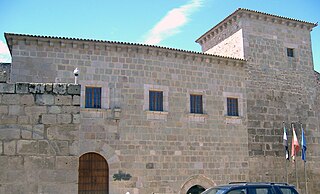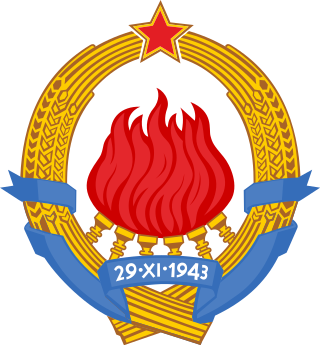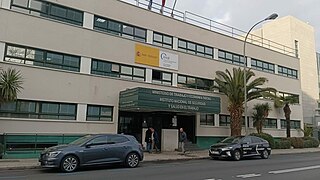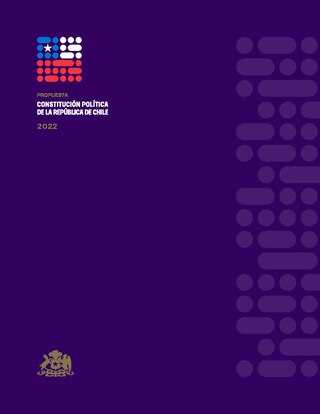
Local government is a generic term for the lowest tiers of public administration within a particular sovereign state. This particular usage of the word government refers specifically to a level of administration that is both geographically localised and has limited powers. While in some countries, "government" is normally reserved purely for a national administration (government), the term local government is always used specifically in contrast to national government – as well as, in many cases, the activities of sub-national, first-level administrative divisions. Local governments generally act only within powers specifically delegated to them by law and/or directives of a higher level of government. In federal states, local government generally comprises a third or fourth tier of government, whereas in unitary states, local government usually occupies the second or third tier of government.

In Spain, an autonomous community is the first-level political and administrative division, created in accordance with the Spanish Constitution of 1978, with the aim of guaranteeing limited autonomy of the nationalities and regions that make up Spain.
Voivode, also spelled voivod, voievod or voevod and also known as vaivode, voivoda, vojvoda or wojewoda, is a title denoting a military leader or warlord in Central, Southeastern and Eastern Europe in use since the Early Middle Ages. It primarily referred to the medieval rulers of the Romanian-inhabited states and of governors and military commanders of Ukrainian Cossacks, Hungarian, Balkaners, Russian people and other Slavic-speaking populations.
The Generalitat de Catalunya, or the Government of Catalonia, is the institutional system by which Catalonia politically organizes its self-government as an autonomous community of Spain. It is formed by the Parliament of Catalonia, the Presidency of the Generalitat de Catalunya, and the Executive Council of Catalonia. It is ruled according to the Statute of Autonomy of Catalonia.

The Constitution of the Italian Republic was enacted by the Constituent Assembly on 22 December 1947, with 453 votes in favour and 62 against. The text, which has since been amended sixteen times, was promulgated in an extraordinary edition of Gazzetta Ufficiale on 27 December 1947. The Constituent Assembly was elected by universal suffrage on 2 June 1946, on the same day as the referendum on the abolition of the monarchy was held, and it was formed by the representatives of all the anti-fascist forces that contributed to the defeat of Nazi and Fascist forces during the Italian Civil War. The election was held in all Italian provinces. The Constitution was drafted in 1946 and came into force on 1 January 1948, one century after the Constitution of the Kingdom of Italy, the Statuto Albertino, had been enacted.
The Xunta de Galicia is the collective decision-making body of the government of the autonomous community of Galicia, composed of the President, the Vice-President(s) and the specialized ministers (Conselleiros).

The Government of Romania forms one half of the executive branch of the government of Romania. It is headed by the Prime Minister of Romania, and consists of the ministries, various subordinate institutions and agencies, and the 42 prefectures. The seat of the Romanian Government is at Victoria Palace in Bucharest.

The Regional Government of Andalusia is the government of the Autonomous Community of Andalusia. It consists of the Parliament, the President of the Regional Government and the Government Council. The 2011 budget was 31.7 billion euros. It employs about 500,000 workers.
Local government in Ukraine consists of two systems based on the administrative divisions of Ukraine. There are 24 oblasts, one autonomous republic, and two cities with special status, with each region further divided into raions (districts) and then hromadas.

Government in Spain is divided into three spheres or levels: the State itself, the regions or autonomous communities and local entities. These levels are not hierarchical, meaning there is no supremacy or primacy of one over the other, but rather they are separately defined by their jurisdictional powers.

The regional Government of Extremadura is the group of institutions ruling the Spanish autonomous community of Extremadura.

The politics of France take place with the framework of a semi-presidential system determined by the French Constitution of the French Fifth Republic. The nation declares itself to be an "indivisible, secular, democratic, and social Republic". The constitution provides for a separation of powers and proclaims France's "attachment to the Rights of Man and the principles of National Sovereignty as defined by the Declaration of 1789".

The Federal Executive Council was the executive body of the Socialist Federal Republic of Yugoslavia (SFRY) responsible for state affairs and for supervising the implementation of laws. It consisted of up to 15 members elected by the Federal Assembly for a four-year term and the presidents of executive councils of republics and provinces. The Federal Executive Council played an important role in the Government of the SFRY from its creation in 1953 until the breakup of Yugoslavia in 1992.

The superior courts of justice, or high courts of justice, are courts within the judicial system of Spain, whose territorial scope covers an autonomous community, as laid down in the Organic Law of Judicial Power.

The General State Administration is one of the Public Administrations of Spain. It is the only administration with powers throughout the national territory and it is controlled by the central government.

In the United Mexican States, the federal executive power of the government is exercised by the president of the republic whose official denomination is Constitutional President of the United Mexican States, to carry out the development of its powers and functions, the president has the power to freely appoint members of his cabinet, each of which is the head of a secretariat of state that is responsible for a branch of the federal public administration; and the organization of these agencies and the powers that each have, are set by the Organic Law of the Federal Public Administration.

The Government of the Autonomous Region of Madeira is the local government of this Portuguese autonomous region.

In Spain, apart from the Central Administration, the central government has a Peripheral Administration. This administration is composed of all those decentralized government services, and they are coordinated by the Government Delegations, which are headquartered in the Spanish regions' capitals. Likewise, this delegations exercise its powers through sub-delegations, headquartered in the provinces and insular directorates, headquartered in some islands. In total, there are 19 government delegations, 44 sub-delegations and 7 insular directorates.

The National Institute for Safety and Health at Work is an autonomous agency of the Government of Spain. The INSST is considered a technical-scientific agency entrusted with the task of analyze and research on safety and health conditions at work, as well of promoting and supporting the improvement of them, in order to achieve a decrease in occupational hazards, work accidents and occupational diseases.

The proposed Political Constitution of the Republic of Chile was a Constitutional draft written by the Constitutional Convention of Chile between 4 July 2021 and 4 July 2022. An early draft was made available on 14 May 2022. The final proposal was made available on 4 July 2022.














